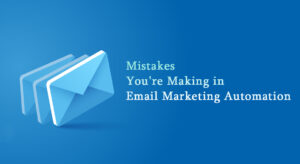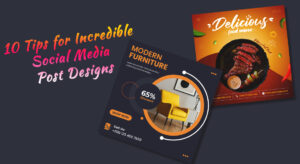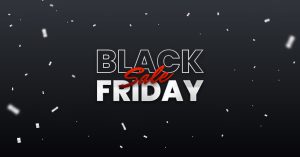The Email Journey: Guide to Transform Users to Loyal Customers

We all got a lot of mail on a day-to-day basis. Did you ever think about what the purpose of an email is? A perfect email should be relevant to your needs and interests, that encourages you to take an action. Email marketing is one of the most used marketing strategies among brands. Many businesses still struggle to make leads through emails. That’s where a well-structured email journey matters. An Email Customer journey, or customer journey, is a well-planned sequence of messages designed to engage customers. In this blog, we will discuss email customer journeys and how they can affect your business.
Table of contents
- Introduction
- What is an email journey?
- The importance of an email journey and how it works
- The four Stages of an effective email journey
- Types of email journeys
- How to create an email customer journey (step by step)
- Email automation tools
- Common mistakes to avoid
- conclusion
low open rates, lack of engagement, low CTR, increasing bounce rates, and increasing unsubscribers are these things taunt you a lot? just sending random emails to your users is not considered email marketing, it’s more about understanding your audience and sending relevant emails to them according to their needs and interests. To grow your brand through email marketing, you need to understand and implement an effective email journey, that is fit for your audience.
What Is an Email Journey?
Did you ever notice a sequence of mails in your inbox that drive you to take an action? When a user takes an action like signing up, downloading an ebook, subscribing to a newsletter, etc, they get a sequence of well-planned, structured emails that is an Email journey. The main purpose of an email journey is to transform a customer from a subscriber to a loyal customer of your brand. It’s a process or a path that builds trust, answers the user’s questions, guides the users, and encourages them to take action. This mail is structured systematically so that a subscriber receives an email that is relevant based on their needs, interests, behavior, demographics, etc, at the most relevant time.
Did you notice that you receive welcome emails when we sign up or register on any sites or apps? First, they send an email introducing their brand, then comes an email that informs us about their product or service, and then they gradually move towards sending emails about offers, discounts, limited-time offers, etc. They encourage us to take action. Some of them even send their subscribers birthday wishes. How is it possible? Did you guys think about it? That’s where the importance of an email journey comes in for a brand.
How an Email Journey Works and Its Importance
When a subscriber signs up, you send an email the next second; an email journey doesn’t work this way. A proper email customer journey is about delivering the right message at the right time by understanding your audience. Segmentation is one of the main parts of a customer journey. Different users have different interests and needs, therefore, you need to separate them into different categories (segmentation) based on demographics, behaviors, genders, interests, and needs according to your industry to send different emails to them. So you need to prevent this mistake by creating emails that are personalized, segmented, timely, and relevant.
To improve customer engagement and retention, you need to have a systematic email journey. Because it increases leads and builds a trustworthy relationship between your brand and customers. Rather than overwhelming them with direct promotional emails, send them proper mail using email mapping. This is helpful to reduce bounce rates and unsubscribes and to increase open rates and CTR. A well-planned email customer journey has an important role in a brand’s success, if you have a goal to increase your business leads and sales
The Four Stages of an Effective Email Journey
A successful email customer journey follows four stages: awareness, consideration, decision, and retention. Understanding each of these stages is very important to move a customer from a user to a customer to a loyal customer.
1. Awareness stage
In the awareness stage, the user just entered the plot; for example, the user might have taken an action like signing up for a freebie, downloading an ebook, filling out a form, or just expressing their interest in your brand. At this stage, the purpose is to simply make an introduction of your brand to them. like a first strong impression about your brand and values to build a curiosity in them. This is the stage to educate, not to direct selling at this stage.
2. Consideration stage
This is the stage where a customer evaluates your brand or product. They are starting to compare products, looking for reviews and feedback, or looking for alternatives. This stage is the opportunity to prove your authority and credibility to your customers. You can send testimonial emails, customer reviews, expert opinions, education emails, etc. The main goal here is to convince subscribers that your brand has the ultimate solutions for their problems.
3. Decision stage
The stage where the reaction action takes place. Here, the user is either ready to buy or at the final stage of deciding to purchase. This is where you need to use your brain: send persuasive emails with limited-time offers, social proofs, product comparisons, and abandoned cart mails with a strong CTA to take immediate action. If you execute the email customer journey correctly, the subscriber will be confident to take action.
4. Retention stage
The final stage is followed by many businesses. The email journey doesn’t end when a customer purchases a product; actually, it is the starting point. You can take this opportunity to send emails to make your customers engage with your brand again, to make them loyal customers. You can send personalized emails, thank-you cards, new launches, product innovations, loyalty rewards, etc. If you make your customers happy, there is a chance that they will become your repeat customers. Make sure to foster valuable communication among your customers. I am sure it will be a long-term lead for your brand.
Types of Email Journeys
Your brand requires different types of emails based on your goals, customers, and industry.
There are different types of email journeys. Some of them are listed below.
1. A welcome email journey is an email sent when a user takes an action. It is kind of a first impression of your brand to a new subscriber. when someone takes an action, such as signing up, subscribing, downloading, or filling out a form, an email message in the form of a welcome note, a thank-you, or helpful links is sent to their inbox. Its purpose is to guide the user toward the next step, building a positive connection from the start.
2. Onboarding Email Journey is designed mainly to inform new users about your product or service effectively. Like how to use guides, tutorials, key features, common questions, etc., in the form of sequential educational emails. The purpose here is to improve the user experience and to increase the engagement of users.
3. Nurture Email Journey is mainly to build a valuable relationship between your customer and brand. This can be done by providing valuable content and insights in the form of educational blogs, tips, case studies, and personalized recommendations. The aim is to build authority and trust among the users and to increase conversion rates.
4. Abandoned Cart Email Journey is a kind of recovery method that is crucial for e-commerce businesses. When a customer leaves without completing a purchase leaving products on their cart, these emails send reminders of the items and create urgency in users. Adding texts like “limited stock, “and “your cart is expiring soon “ can boost conversions.
5. Re-engagement Email Journey is mainly to target past customers or inactive users who haven’t engaged with your emails for a long time. It includes special coupon codes, offers, surveys, reminders, etc. The goal is to rebuild their interest to increase engagement and encourage them to take action.
6. Post-Purchase Email Journey mainly aims for customer satisfaction and to encourage repeat purchases. This includes emails after a purchase, like shipping updates, order confirmations, requesting feedback, etc. This type of email journey also opens up the opportunity for cross-selling and upselling related products.
How to Create an Optimized Email Journey (step by step )
You need a well-structured approach to build an effective email customer journey.
- whether it is to increase CTR, engagement rates, conversions, or re-engagement, you need to understand the goal of your email first.
- The next step, which is segmentation. If you are clear about your goal, move on to categorizing the audiences based on their interests, needs, engagements, behaviors, demographics, etc. It makes sure that the email is sent to a specific audience rather than a general one.
- setting up the email sequence by deciding which type of email will be sent in each stage that is, the next step – email mapping. Writing specific, measurable, attainable, relevant, and timebound emails is crucial. Make sure to add a call to action at the end of emails.
- Automation; the final step, in this, you can use automation tools like Mailchimp and HubSpot to send an email when a trigger or action takes place.
- The final step is to continuously track email performance.to understand what is working and what is not. Track metrics like CTR, open rates, bounce rates, conversion, and spam reports
Common Mistakes to Avoid in an Email Journey
1. Sending Too Many Emails – overwhelming your customers with multiple emails in a short period of time is a bit irritating. Ensure your emails are relevant and follow a balanced frequency.
2. Lack of Personalization—General emails that are not tailored to the interests of your customers will reduce conversion rates. do proper segmentation and personalization
3. Ignoring Email Deliverability & Spam Filters—Sending email without considering factors like spam filters and authentication protocols will affect your sender’s reputation. Make sure to avoid spam-triggering words, and ensure your emails are optimized for inbox placement.
4. No Clear Call-to-Action (CTA)—an email without a CTA is just a text message. You should include a proper CTA to lead the customer to take proper action
5. Poor Email Automation Strategy—Not setting up proper automation is always a problem. It leads to emails being sent at the wrong time and duplicate or inappropriate messages. Make sure you set up a well-structured, segmented automation flow.
6. Not Optimizing for Mobile Users– Most users open their emails using mobile devices, so ignoring mobile optimization is a major mistake. Use clickable buttons, user-friendly templates, and concise subject lines for a better mobile experience.
Avoiding the common mistakes listed above will help you to create an effective email customer journey. by improving CTR, open rates, engagement rates, and conversion.
Best Email Automation Tools for an Effective Journey
There are several automation tools that are free and paid, which is helpful in creating an effective customer journey. Choosing the right tool according to your business is essential. Some of the main automation tools are given below.
.
- ActiveCampaign—Best for advanced automation and personalization
- HubSpot Email Marketing—Best for businesses looking for an all-in-one marketing platform
- Mailchimp—Best for small businesses and beginners in email marketing
- Klaviyo—Best for e-commerce businesses and Shopify stores
- ConvertKit—Best for content creators, bloggers, and personal brands
- Drip—Best for advanced segmentation and e-commerce automation
- GetResponse—Best for businesses looking for a full marketing suite
Conclusion
An email customer journey is not just an automated sequence of emails; it is one of the effective strategies in marketing. It helps businesses to generate leads, build relationships and trust, and increase conversion and sales. An email customer journey and email marketing are highly effective for the success of a brand. By understanding the stages of the customer journey, how to create an email journey, common mistakes, and email automation tools, you can also build an effective email journey for your brand.
Are you interested in creating a high-converting email customer journey for your business? Then HubSpot Marketing & Automation Tools is the best option for you. Start your business success here.







